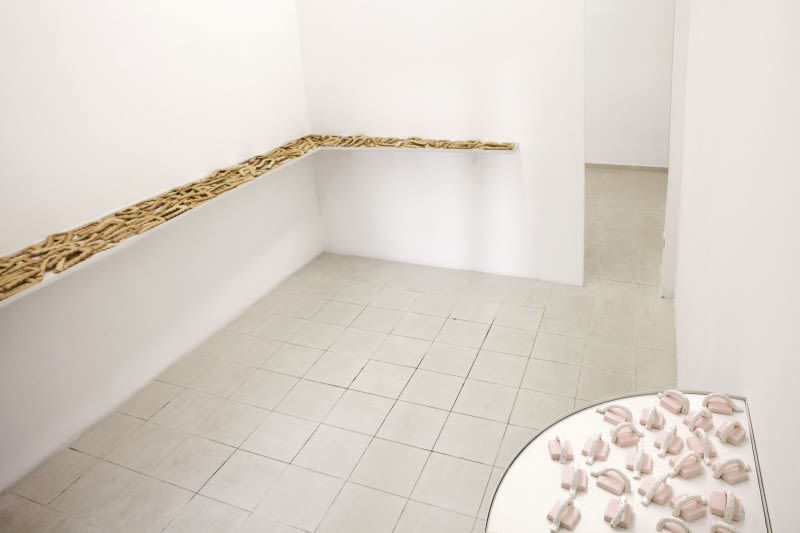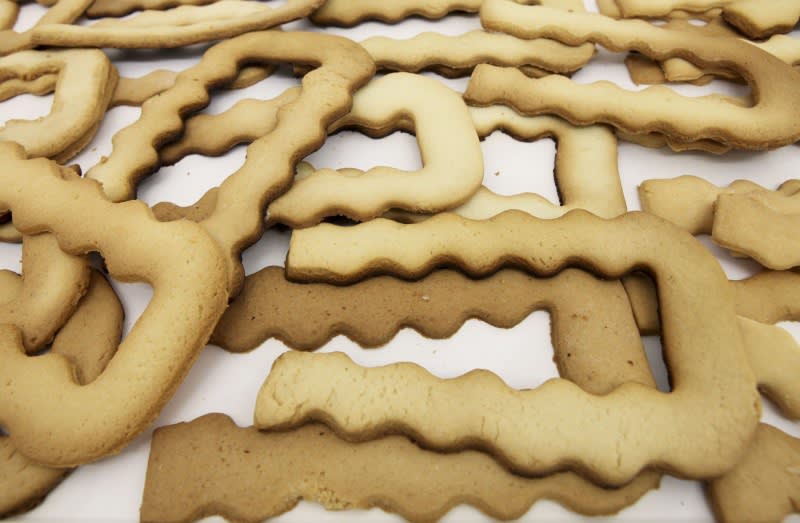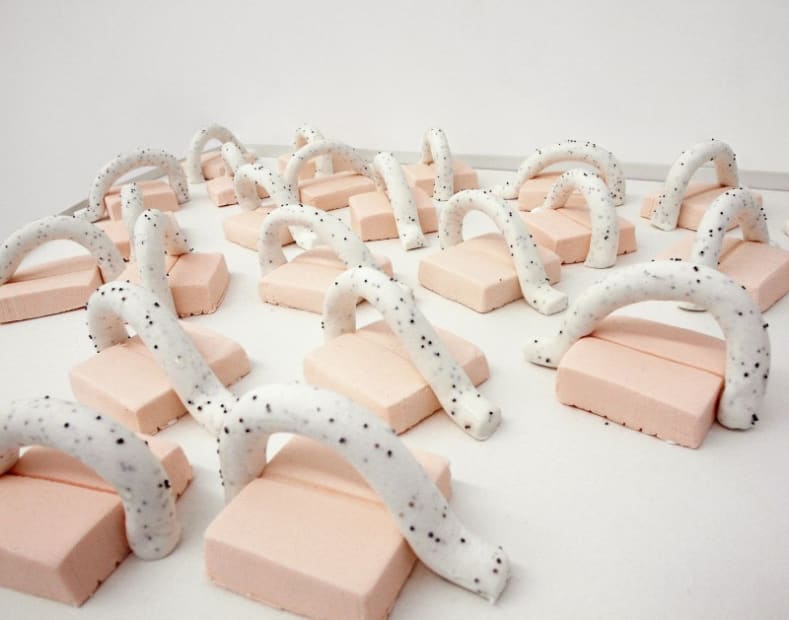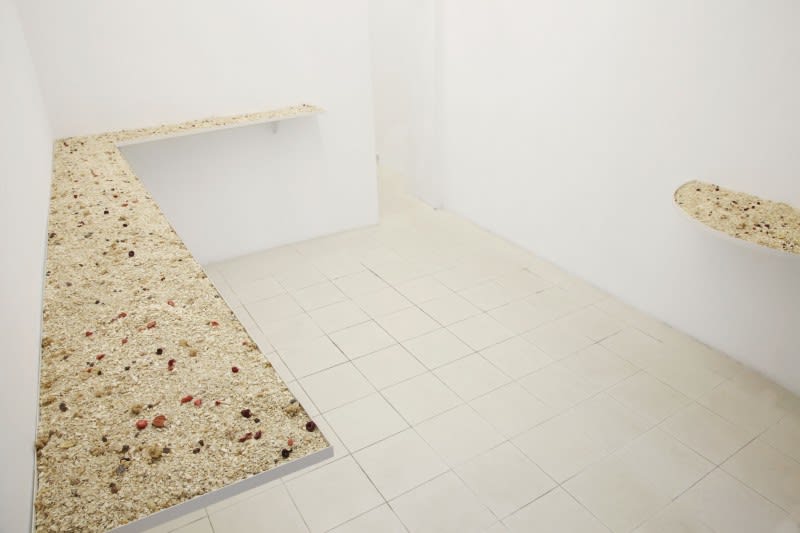NICOLE WERMERS: FOOD IN SPACE: PIGNA PROJECT SPACE, ROME
Exploring how methods of display and presentation affect our understanding and experience of space, Nicole Wermers’ work investigates the legacy of modernism and the aesthetics of consumption in contemporary visual culture. Through sculpture, photography and collage, Wermers recontextualizes and reimagines modernist forms in ways that frame, contain, and transform the spaces in which they are installed.
Ashtrays resembling sculptures or sculptures that remind one of security devices at the exit of department stores; objects that blur the distinctions between functional design and autonomously conceived art and reflect on the conditions of producing sculpture in our thoroughly designed environment.
The project conceived for her first solo exhibition in Italy furthers this research. Starting from the observation of design of everyday objects and their commercial context, the artist evaluates the form and content by using its same language.
During walks through Rome Nicole Wermers came across the displays of typical artfully made Sicilian sweets. Inspired by their sculptural qualities and levels of abstraction of religious mythology (for example the dome shaped cakes representing the cut off breast of the martyr Sant’Agata), Wermers designed two different kinds of sculptural sweets that will be shown on two specifically made steel shelves hanging from facing walls of the gallery. During the course of the exhibition the display of the sweets alternates with the display of müsli in the shelf like structures on the wall. The müsli adopts the function of a “nightdecoration” (normally a term for a a night-time substitute of valuable goods in shop windows) and resonates some of Wermers’s previous shelf and table sculptures that structure shapeless materials such as sand and water. The title of the installation “Eigenmischung” is a German term describing a personalised blend or mix of ingredients referring to sculptural as well as everyday processes of production and at the same time to the artist’s displayed customised mix of müsli.






